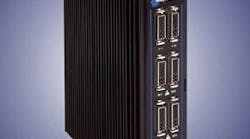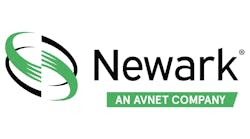PLCs are definitely changing. At the low end, in the sub-$1,000 price range, nano and micro-PLCs are gaining capability and offering lots of bang for the buck. At the high end, PLCs are becoming more like PCs every day. Sales are soaring and PLCs are here to stay.
Commenting on present market conditions, ARC Advisory Group (www.arcweb.com) says, "The industrial PC is not yet a threat," although they continue to hint at the faint possibility that somewhere, somehow, PCs will prevail. "Rapid changes in computing and communication technologies, a strong user acceptance of open systems, the global economic slowdown, and a small but growing threat from industrial PCs are combining to create turbulent market conditions and the threat of an uncertain future."
In spite of this doom and gloom attitude, ARC predicts that the total business worldwide for PLCs will increase from $5.8 billion in 2003 to $6.5 billion in 2006.
PLCs have certainly responded to ARC's "rapid changes in computing and communication technologies," and now fit right into open systems and networking. "One of the trends is that PLCs continue to have simplified programming," says Giardina. "You're seeing the continued expansion of programming languages and the simplicity of network setup."
Rockwell agrees that new opportunities are opening up. "One of the greatest opportunities for PLC growth is in safety control," says Miclot. "Today's safety PLCs are being utilized across a growing number of failsafe applications that were previously supported by safety relays. Safety PLCs can significantly reduce wiring costs and panel space as well as provide improved flexibility and reliability."
The PC-like capabilities of modern PLCs make some market researchers and suppliers want to change their name. "The term programmable automation controller (PAC) emerged to better describe a new breed of controllers that converge the best attributes of the PLC, DCS, PC, and open control platforms," says Miclot.
We continue to resist using that name to describe PLCs, but must admit that the nature of the PLC business has certainly changed. While nano and micro-PLCs continue to do traditional sequential logic work, their new capabilities let them compete in many other applications.
Higher-end PLCs are now doing tasks that once belonged exclusively to process control systems, such as DCSs. With their open PC architectures, PLCs are talking to business systems, such as ERP and asset management. And new PLCs are beginning to introduce even more capabilities, such as web servers, Ethernet communications, fieldbus connections, and HART.
You can see some of those new capabilities in the roundup products that follow:
PLC Family
BC, BX, CX, and IPC controllers all use TwinCAT programming software. The BC has a subset of PLC functionality, BX has standalone low-level PLC capabilities, CX can be used for mid to high-level PLC and motion tasks, and the IPC handles open PLC, motion, and HMI applications. BX and BC have choice of integrated fieldbus connections including DeviceNet, Profibus, and Ethernet.
Beckhoff Automation
952/890-0000 www.beckhoff.com
Cigar Box Controller
Berkeley Process Control
510/236-3333 www.berkeleyprocess.com
Ethernet I/O Kit
AutomationDirect
770/889-2858 www.automationdirect.com
Compact PLC
Toshiba Machine
847/709-7308 www.toshiba-machine.com.
Fieldbus Controller
Wago
262/255-6333 www.wago.com
Graphic Display Control System
The Model 880 Network Control System serves as a host monitoring and control system for serial networks of gas detectors and other devices, including PLCs. It monitors 80 or more devices, displays device status and alarms on a 5.6-in. color touchscreen, and records device calibration, alarms, and other events to a 3.5-in. floppy disk.
Detcon
Transmitter/Controller
Severn Trent Services
215/997-4000 www.severntrentservices.com
Process Controller
Walchem
508/429-1110 www.walchem.com



